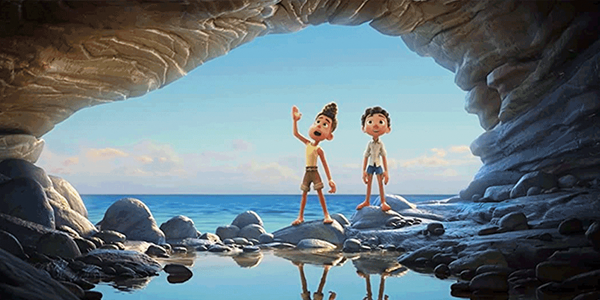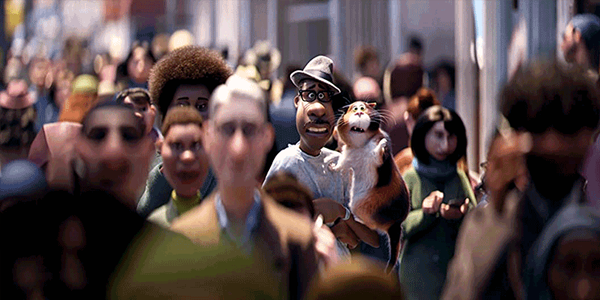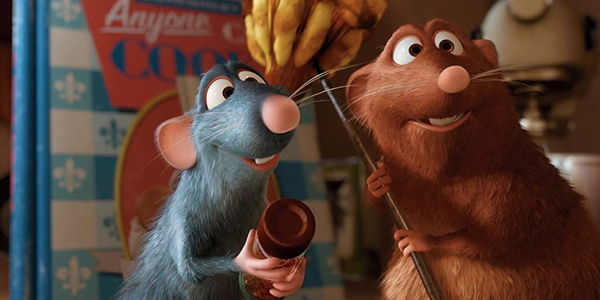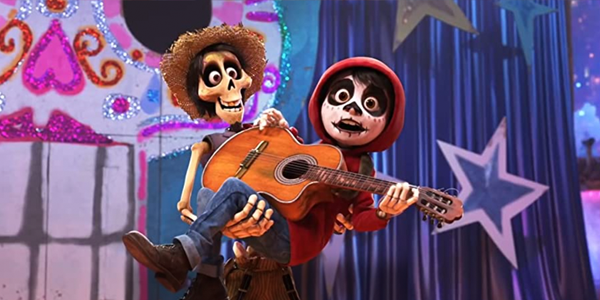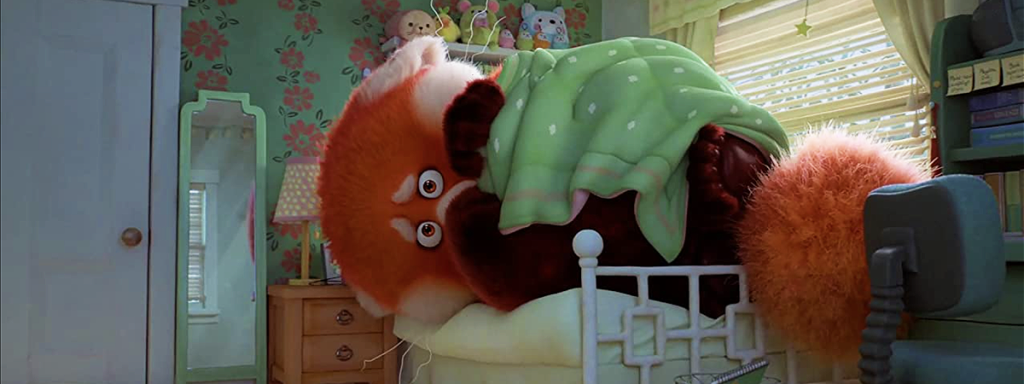
review | Turning Red
The latest Pixar offering falls squarely into so-so territory, way closer to Luca than Soul
by John Sciacca
March 14, 2022
The term “dumping ground” certainly has negative connotations but it seems an apt description for how Disney has been using Disney+ for recent Pixar films. Once the crown jewel of animated titles, expected to generate upwards of $1 billion in worldwide box office per film, the past three Pixar features, including its latest, Turning Red (which debuted on Friday March 11), have all skipped the theater and been released directly onto the streaming service without even requiring the add-on “Premier Access” fee for early viewing.
One of the things you typically expect from Pixar is a multi-faceted story that appeals across multiple generations. At the studio’s best—Inside Out, Toy Story 3, Soul—it creates stories and characters with so much depth and emotion it can bring viewers to tears. (I swear, the end of Toy Story 3 gets me every time.)
While it was beautiful-looking, I felt Pixar’s last film, Luca, was an especially weak and overly sweet entry in its oeuvre, especially following Soul, which tackled such deep and heady topics. I’d like to say the studio returned to form with Turning Red, its 25th feature, but it just lacked the depth I was hoping for.
Red is directed and co-written by Domee Shi, who previously helmed the 2018 Pixar short Bao, which I thought was wonderful. In that sub-eight-minute film, she gave us a full emotional story arc that made us care for a dumpling that served as a metaphor for the mother’s love for her son and him growing up.
Shi clearly understands and is interested in sharing Chinese culture, and she doesn’t stray from that here. Meilin (Rosalie Chiang) is an overachieving 13-year-old girl currently in Grade 8 growing up in Canada. She has a ride-or-die crew of three friends who are starting to notice boys and want nothing more than to see boy-band sensation 4*Town in concert when they come to Toronto during an upcoming tour. But, of course, Meilin’s tiger mom, Ming (Sandra Oh), has objections to this. Complicating things is that, due to an ancient family blessing/curse, Meilin—like all the women in her family when they reach a certain age—has started suddenly transforming into a large red panda whenever she gets too excited or is overcome with emotions. And, as a teenager, this is nearly all the time.
In some ways, Turning Red reminded me of a different take or follow-on to Inside Out, however not as brilliant or entertaining. But this is more of an “outside in,” as we see all the external things Meilin is going through and how they affect her emotions. As the parent of a teenage daughter, there’s a lot that’s relatable here and the “not a girl, not yet a woman” purgatory that can be the teenage years. The film’s core message is about growing up, changing, and developing into adulthood and discovering your own self, but without disappointing family or leaving it behind.
One area where I’m happy to say Pixar is still very much on point is picture quality. The studio seems to raise the bar on the technical capabilities of its computer animation with each film, and that is certainly on display here. Turning Red is visually stunning, and you could pick any frame and dissect the shading, texturing, lighting, and detail that went into it.
Taken from a 4K digital intermediate, the subtle textures really stood out. Things like the texture in a metallic name tag Meilin wears working at the family temple, the tight herringbone pattern in a hat, a rubber dodge ball, the fuzzy/furry textures of Meilin’s stuffed toy animals, or the natural shimmer and texture of the fabric on the emerald-colored blazer Ming wears. And the detail and movement in the fur work when Meilin is Red Panda is a clear evolution from Sully in Monsters Inc.
The animators show incredible attention to even the smallest details, such as single strands of stray fabric on a hat or sweater or a loose strand of hair. In one scene, Meilin is shown in profile lit by moonlight through a window, and you see these fine tiny hairs on her chin and neck. Or notice the smoke curling off the incense sticks in the temple as it softly coils and winds its way towards the ceiling while slowly dissipating.
There is definitely more stylized animation here. For example, when characters are overwhelmed by something’s cuteness, they will get large, starry manga eyes, and there are also a lot of lighting effects that are very anime-inspired. There’s a scene about 9:30 into the film where the dad is cooking that’s especially stunning, causing everyone in our family to literally say, “Wow!” at the same instant. It’s near photo-realistic animation that is just beautiful to behold, and I’d happily watch an entire show of nothing but the dad preparing a meal in that style and quality. Also, stay through the end credits for another scene that is incredibly lifelike.
There is plenty of red here, which is an extremely auspicious color in Chinese culture, and the HDR with Dolby Vision grade helps it to really pop, as do the many scenes around town colored with bright pinks and pastels. Also notice the color shading in Meilin’s red hair, with its blended layers and shades of red, orange, and yellow. Near the end, she visits a magical bamboo forest where there are a lot of vibrant and glowing lighting effects.
The Dolby Atmos soundtrack has a good bit of atmosphere and immersion but, like with many of Disney’s recent sound mixes, I found myself pushing the volume knob about 5 dB louder than usual. The mix’s primary goal is clearly presenting the dialogue and it pulls that off well, but there’s a nuance to the quality of the audio here depending on the environment where characters are speaking. For example, voices in Meilin’s small, tiled bathroom have a completely different tonal quality than when they’re speaking inside the temple or shouting in the bamboo forest.
Outdoor scenes have plenty of ambient surround effects such as traffic sounds, or thunder that cracks and rolls overhead, or the rustling of bamboo branches and leaves in a forest. Notice the calming Zen music and gentle, room-filling chimes, the winds that blow through the temple, the voices chanting all around you, or the arena atmosphere at the 4*Town concert.
Your subwoofer gets a bit of work, giving some serious heft to the panda’s giant footsteps, or when Meilin poofs into the panda during one especially embarrassing moment at school, or for the panda’s booming voice, or during the concert.
Turning Red seems to have critics and audiences split, with critics giving it a 95% Rotten Tomatoes rating, matching both Soul and Wall-E, and audiences scoring it a more mediocre 66%, closer to The Good Dinosaur’s 64%. While I didn’t find Turning Red to be among Pixar’s strongest outings, it’s entertaining and looks fantastic, and certainly worth checking out for Disney+ subscribers.
Probably the most experienced writer on custom installation in the industry, John Sciacca is co-owner of Custom Theater & Audio in Murrells Inlet, South Carolina, & is known for his writing for such publications as Residential Systems and Sound & Vision. Follow him on Twitter at @SciaccaTweets and at johnsciacca.com.
PICTURE | Subtle textures really stand out in the 4K presentation, and the near photo-realistic animation is just beautiful to behold
SOUND | The Atmos soundtrack has a good bit of atmosphere and immersion but, as with many of Disney’s recent mixes, is about 5 dB softer than it should be
© 2025 Cineluxe LLC


